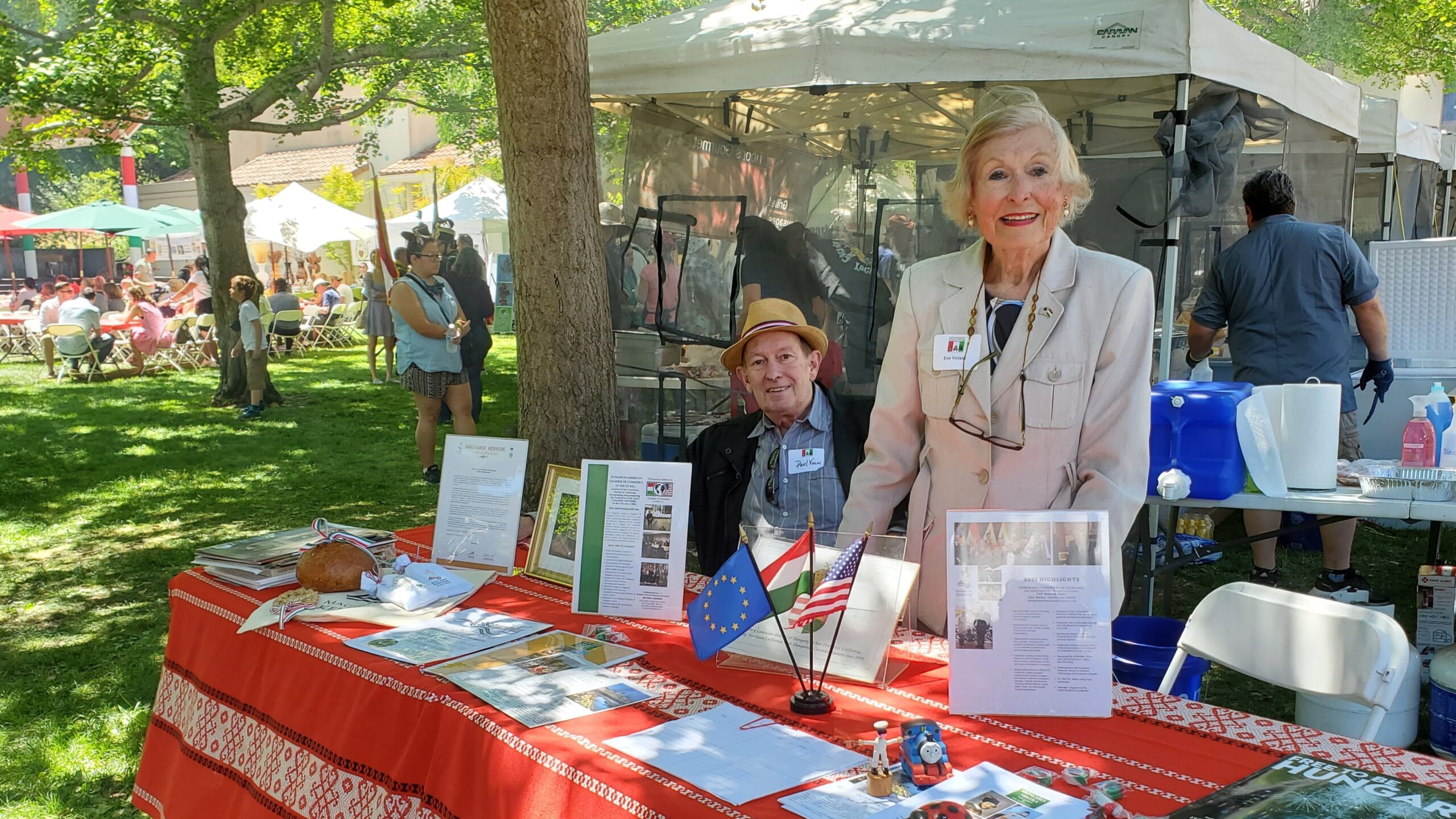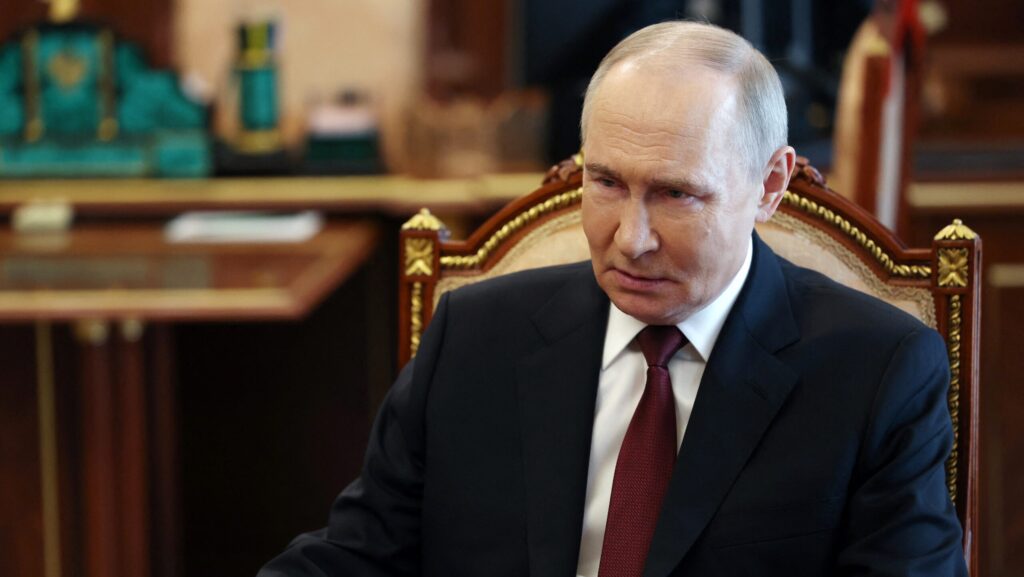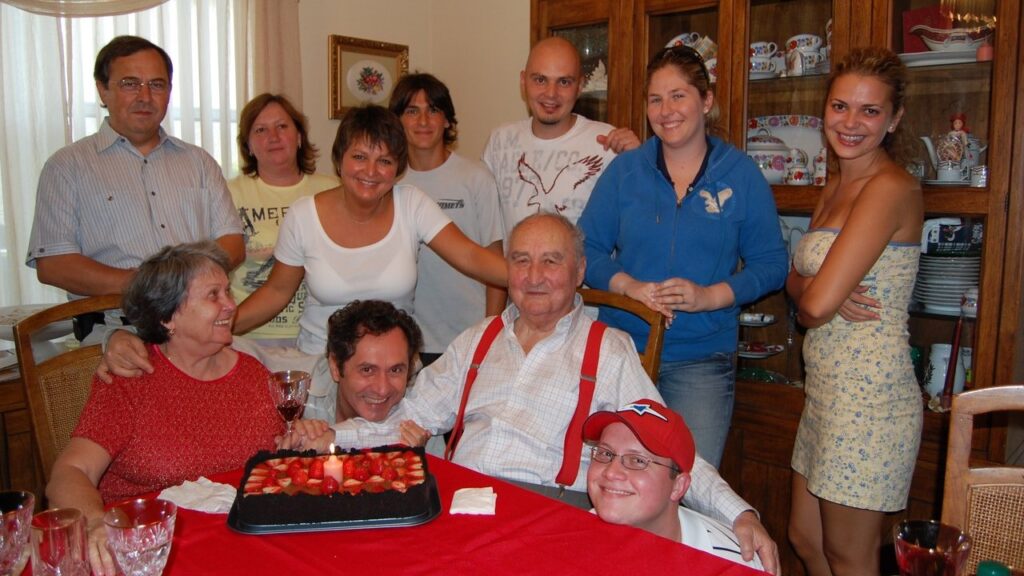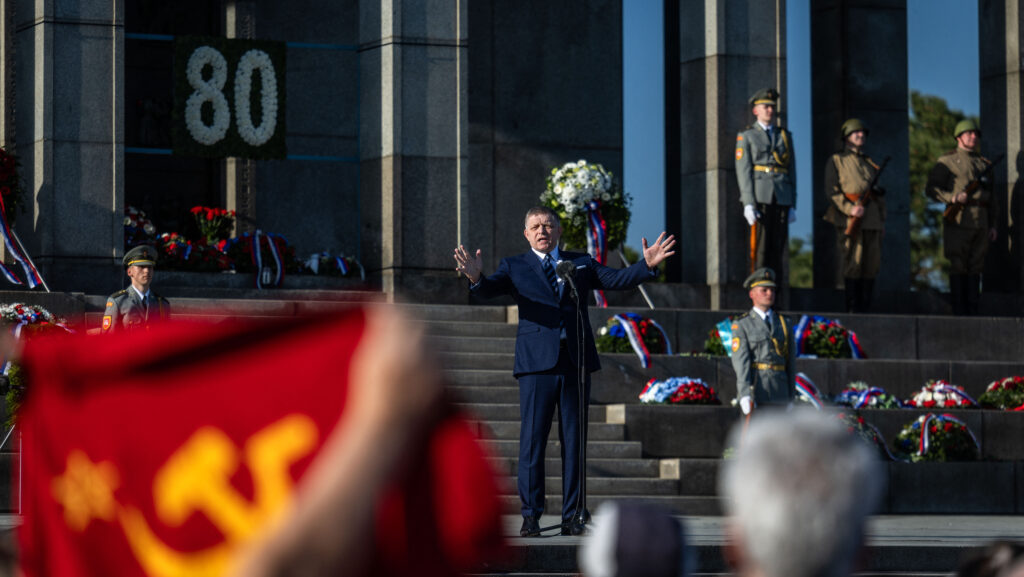Éva Voisin fled Hungary with her family as a child in 1956 and settled in Los Angeles in 1959. She quickly became involved in the Hungarian community there. She met her French husband while studying in Paris and they moved to San Francisco in 1968, where she joined a small but very active Hungarian community. Since the fall of communism in Hungary, which she followed closely, she has been an enthusiastic and active supporter of Hungarian–American diplomatic, economic and cultural relations. She was appointed Honorary Consul of Hungary in 1993, a role she still undertakes with great energy.
***
Most 56ers arrived and settled on the East Coast. Your family didn’t… Why?
We left Hungary on 1 January 1957, just before the borders were sealed by the Communist authorities. It was a very difficult decision to make and my parents hesitated till the last minute. I recall long, animated discussions at home and with friends. It was a very difficult moral and personal decision because we didn’t want to leave Hungary, our roots and our families. But Hungary was such a different world at that time. As a child, I remember the oppression and the isolation from the rest of the world. We couldn’t travel, we couldn’t get news of the outside world, except occasionally and clandestinely from Radio Free Europe, when the emission wasn’t scrambled. I learned that there are two versions of history and truth, the one you hear at home and the one you hear and say in school.
Due to our late departure, most countries’ refugee quota was filled so we had to wait for two years in Austria. My parents wanted to move to a neutral country in Europe, like Switzerland, but the wait was too long and they found sponsors in Los Angeles, with a large Hungarian community there, so they chose that city. The Schwechat Castle was converted into a refugee camp. My parents helped there in its library. My sister and I went to the Hungarian school in Iselsberg, Tyrol, named after its founder Queen Juliana of Holland, who established it to benefit Hungarian children. Later I studied at the Sacré Coeur in Vienna. We left for California in 1959.
When and how did you get involved in the Hungarian community?
I was always involved in the Hungarian community, wherever I lived. In 1959 Los Angeles had two or three churches and a dance group. Béla Fesztori, who had been a scout in Hungary before it was banned by the communists in 1949, invited my sister Ildikó and I to help him form a scout troop right after we arrived. Thus, we’re founding members of Brother Julianus Troop No. 8. I’ve recently received a little commemorative medal reminding me of those times. My sister still lives in Los Angeles; she is a founding member of the Old Scouts Association composed of many of those who were active in the ‘60s. I started a similar group during Covid in San Francisco. I’m still in touch with my former scout friends and occasionally attend the Scout Ball in Los Angeles. In San Francisco it is an annual event I support.
We also joined the Hungarian Students’ Association and an informal Hungarian group at the University of California at Los Angeles (UCLA) that we both attended. Our parents were also active and they met numerous previous friends and acquaintances from Budapest, who had started their immigrant journeys after WWII or in 1956 somewhere in South America or Canada and arrived in California about the same time as us.
Later, while studying in Paris, I found that the local Hungarian community centered around Saint Elisabeth of Hungary Catholic church. Attending there was the first time my husband met Hungarians. 55 years later, he still reminds me that Paris was the only place where Hungarians served pálinka and goose liver after mass! He has always been very supportive of my activities.
Why did you study in Paris? Why did you move to San Francisco afterwards?
I studied French at St Monica’s High School, and continued it at UCLA, which had a study abroad program. I actually attended the Sorbonne for a year after I graduated. There I met and married my husband in St. Severin, a fabulous gothic church. I already knew and loved San Francisco from my prior travels, only a short flight from Los Angeles where my parents and sister lived. I felt it would be a great place to settle and beneficial for both our careers.
Your son is thus an American born of a Hungarian–French marriage. To what extent were you able or willing to involve him in the Hungarian community?
I was determined to teach him and involve him in every aspect of becoming a Hungarian, while keeping in mind that he had three cultures to navigate. My son spoke Hungarian very well when he was young, because I spoke Hungarian to him. My mother used to visit us often till she could and that also helped. At that time, however, unlike today, there were no Hungarian weekend schools, no scouts, no online schools, no outside reinforcements of what the children learned at home and no support for the parents. We must also add the all-pervasive ‘melting pot’ mentality that existed in the United States till about ten years ago, when it started slowly being replaced by ‘ethnic pride’. While my son had the chance to visit an extensive family and attended various camps in France, this wasn’t possible in Hungary. The closest he got to a Hungarian school was the Woodside Priory, a school founded by Hungarian Benedictines in 1957, where he didn’t learn Hungarian but received a rigorous education from Hungarian priests.
In the early ’70s, for a short time, we organized, and Father Kristof Hites at the Hungarian Catholic Mission hosted a Hungarian school on Friday nights. Our son went there for two years and he is still friends with the children he met. The parents, mainly mixed-language couples, are still in touch. When the local scout troop was established in the mid ‘70s, the Friday night Hungarian classes were taken over by the scout program. I fully supported them. As a former scout leader, I knew the founders, Tamas Csoboth who was my instructor at the Fillmore Scout training camp in New York. Wherever I go, whatever the occasion, worldwide, I run into current or former scouts. I think the scouts were and are the answer to educate those who live outside of Hungary. Now they are starting children in pre-kindergarten, realizing that they should start as early as possible. Today, there are Hungarian playgroups and pre-kindergartens at both churches in San Francisco. The scouts’ pedagogy requires that the children speak fluent Hungarian, which I fully agree with. However, because of this requirement, the Friday night group couldn’t continue in the weekend Hungarian school. These are the children and their parents who need special attention. Otherwise, they are pretty much left to their own resources.
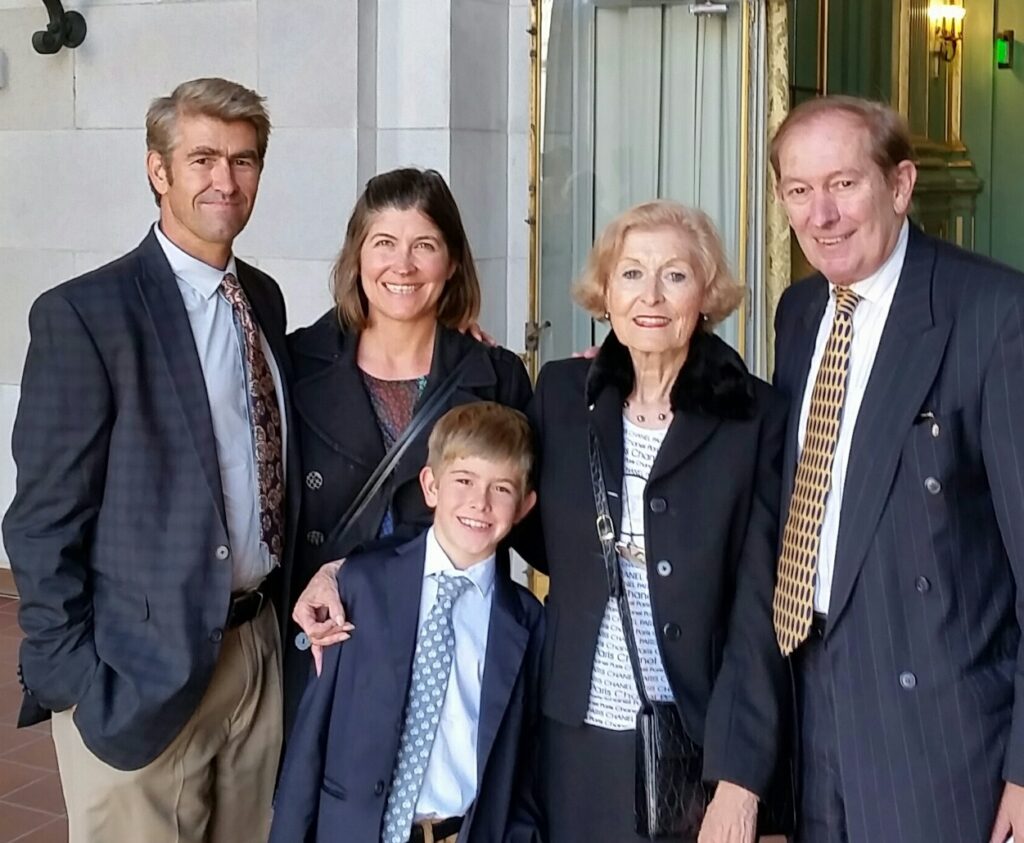
My son attended the pivotal events of the local Hungarian community. He served at the opening of the Honorary Consulate, he facilitated Dr. Teller’s virtual communications with the other 11 recipients of the Corvin Chain, when Dr. Teller couldn’t travel to Budapest anymore. He helped and volunteered at all the programs I organized. He visited Hungary many times since 1990, way after the critical age of language learning, but he knows Hungarian culture, tradition, history and cuisine. He is getting ready to send his son to Reconnect Hungary next summer.
The preservation of the Hungarian language is a delicate issue… How do you see it?
I think we must do everything to teach it since the ultimate goal is to speak Hungarian and participate in the Hungarian diaspora life. It’s easier for children if you have two Hungarian parents who are able to take the children to Hungarian weekend schools and the Hungarian scouts. Language is one of the most important components of our national identity. However, so is commitment to and knowledge of our heritage, culture, customs, history, literature and a willingness to participate in Hungarian community life. I see hundreds of people every year in my legal or consular capacity with varying degrees of language proficiency. Some go back three-four generations and some even go back to the civil war in the U.S. The last census tells us that there are 1,4 million people declaring to be of Hungarian origin.
I’m a realist and a pragmatist, always looking for the best solution to reach out to these people. We must see how we can reach more of them and ignite their interest in Hungary. Firstly I send them my newsletter, in English, including information about online language classes and scholarships now available for adults and their children. I make sure that they visit our Orly Museum and some other cultural events we host. I suggest that being a Hungarian is more than just speaking the language. They can still be ‘good’ Hungarians in other ways besides the language. If I succeed in getting then to attend a heritage festival, or send their children or grandchildren to study in Hungary, or getting them to set up a scholarship fund for Hungarian American children, or a foundation to repair art objects in Hungary or benefit various causes that further the Hungarian community, that is being Hungarian as well and they are then part of the now global Hungarian diaspora. I think we need to reach out to all! It’s also important for the future of the diaspora to have people who don’t necessarily speak Hungarian, but are emotionally connected, interested in their ancestors and willing to participate or actively help with Hungarian initiatives. That’s the need I try to fill, to cater to these people as well.
Is this why you write consular newsletters in English? Why aren’t they bilingual?
The question is who we are trying to reach and what is the most efficient way to do it. Besides informing the Hungarian community, I see this newsletter as a first step to reconnect with those second, third, fourth generation Hungarians, who have been lost linguistically. The first step is to give them information and to get them to reunite with their Hungarian ancestry. I want to integrate them into our community, get them interested in their Hungarian identity and cultural heritage. For that, they need information they understand. But I also include language learning opportunities in all my newsletters. And it’s also a matter of resources. I’d love to have the newsletter in Hungarian as well, but I don’t have the time or energy. In an ideal world, I would hand the whole newsletter to a media professional, and it would be in Hungarian as well. But I create it personally. It’s an honor for me to represent Hungary, to do this wonderful job, which is why I’ve been doing it for 33 years. But since I’m an Honorary Consul, all my community work, travel expenses and events I organize, or host are self-financed. I try to maximize my own time and resources. I’m always looking for volunteers to support me.
As a Consul I serve the American public as well. I want to enhance Hungary’s image, to promote Hungary and our Hungarian events and causes. The consulate is the face of Hungary to the general public, who turn to me with all kinds of questions, comments and requests. I write the newsletter to inform the general public, Hungarian, American and other nationalities.
Why and how did you become an Honorary Consul?
I first visited Hungary in April 1968, while studying in Paris. Since then, I always followed events in Hungary as closely as possible, often wondering what my life would be like had my family stayed there in 1956? Our information about the political situation was limited, and our only news sources were visitors, like the journalist and poet Tollas Tibor, who edited a newspaper in Germany and brought us news about Hungary and the samizdat movement in the ‘80s. I used to host literary evenings for Tibor, to share his news with my local community.
In March 1989, we suspected that something was going to happen, when Prime Minister Károly Grósz came to speak at the World Affairs Council. Noone from communist Hungary had been here or addressed nearly 300 people in San Francisco. The fall of the communist regime was a magical time. Hungary was finally free, and we were elated with all the new possibilities to have direct and open contact with Hungary and everything Hungarian. I wanted to witness this change. I wanted to support the new Hungary, and I had a front row seat to history! I witnessed 1956 and 1990, two pivotal moments in Hungarian history. I was unable to move back in 1990, so I participated and contributed to the transition from here. I feel I had the ability, I spoke several languages, and my legal profession gave me the needed skills for diplomacy. I decided to attend the first free parliamentary elections set for March 10, 1990, and write about the legal changes in Hungary. I met a journalist who was writing for the Christian Science Monitor, so I volunteered to translate for him. I had a press pass then, so we could really get involved in the political-historical events of the time. During those two weeks we did lots of interviews with everyone preparing for the elections, including Viktor Orbán and Ernő Rubik, the world-famous creator of the Rubik’ Cube. I have wonderful memories of election fever and transformation.
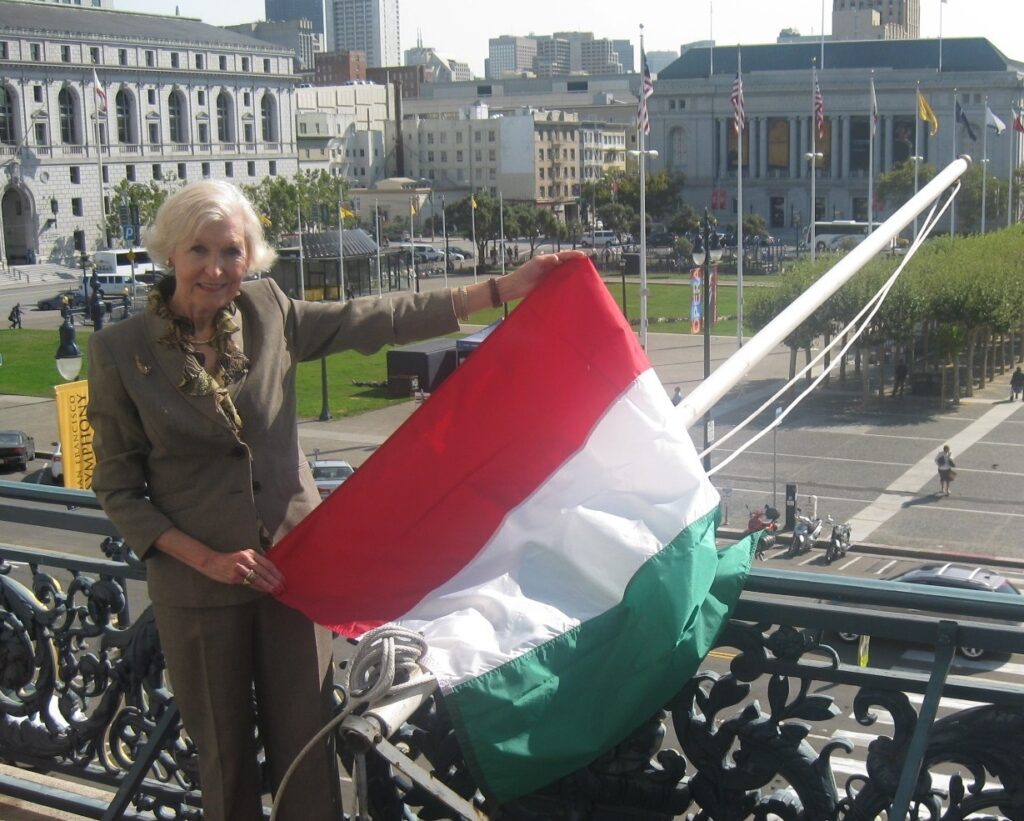
While in Hungary I realized how important it was for Hungary to integrate economically with the Western world. So upon my return, I founded the Hungarian American Chamber of Commerce (HACC), a nonprofit organization that promotes mutual exchange and development of business. The change permitted Hungary to expand its diplomatic representation to the West Coast and open a new consulate. I lobbied hard to be in San Francisco, or at least the Commercial, Science and Technology office to be located here. When it was decided to be located in Los Angeles, the Hungarian Embassy asked me to be the Honorary Consul in San Francisco. The Vice Consulate only opened in San Francisco 26 years later, in March, 2016.
I went to the opening of the Consulate in Los Angeles in March 1992, in the midst of great publicity and many, including Zsazsa and Eva Gabor, were in attendance. My appointment letter was signed by Géza Jeszenszky, Foreign Minister in 1993. I was delighted to undertake this position. It isn’t just a title, it means that you do the work of a diplomat gratis, but that you are officially representing Hungary, appointed by the Hungarian Foreign Ministry and recognized by the U.S. Department of State. During my tenure, I had many unique experiences. It was fascinating to be present in Palo Alto when Dr. Teller received the Corvin Chain, which I personally hand carried back to Budapest when he passed away. I also had the task of returning the microscope of Dr. Bekessy, who won the Nobel prize for Audiology, to the Postal Museum in Budapest. I raised the flag at San Francisco City Hall, I sat in the prime minister’s motorcade when all the traffic stopped for us. The honorary consular network has expanded since then. I think it’s a great idea. It supports Hungary with no financial burden to the government by dedicated professionals.
What kind of issues or tasks do you deal with?
The authority is based on the Vienna Consular Convention. Our first and foremost duty is to support the Hungarian community living, working, studying or just as tourists here. This involves publishing important information to them, about community events, security warnings, notice of elections, report of lost/found passports, scholarship application deadlines. In addition to the Consular newsletter, I organize a quarterly ‘Coffee with the Consul’, a Q&A session, now held digitally. There are certain mandatory consular tasks, such as notarization of documents.
I represent Hungary on many other platforms. Beyond the community outreach, there are cultural, economic and diplomatic aspects. I attend all forums, briefings and receptions by California, city governments, the U.S. State Department, the Governor’s office, the Office of Emergency Management; also, the EU opened a West Coast office three years ago. They often brief us about laws already in effect within the EU, regarding AI and the digital marketplace. I also keep in touch with the other 65 consulates in San Francisco, including the EU office, a large group of government official bodies and civic organizations, like museums, the Rotary Club and the Red Cross. I attend most programs to maintain my network current, so I can leverage it when the need arises to organize events or programs for visitors from Hungary.
I organized many cultural programs to mark some of Hungary’s historic milestones, like the 1100th anniversary of Hungary’s settlement in the Carpathian Basin. I hosted three major events. I started at S.t Mary’s Cathedral, with an interfaith Service. I held a reception at the Museum of Fine Arts on August 20, and terminated the year with a big ball. On other occasions I hosted a reception to celebrate St. Stephen’s Day, Hungary joining NATO and the EU. I organize the annual commemorations of the October 23 Revolution at our famous Gloria Victis statue and at major milestones such as the 50th and 60th anniversary. I also hold a program at the San Francisco War Memorial Opera. I’ve partnered with the Red Cross to do emergency training for the community in my office, due to the potential for earthquakes in California.
But focusing on Hungarian American business is one of my personal priorities. I feel we have to take advantage of our location and contacts in Silicon Valley at Google, Apple, Tesla, Airbnb, etc. We don’t have that many Hungarian businesses here, but we have a lot of intellectual capital to potentially bring together startups and promote Hungarian innovation and business. We have a very exciting Hungarian Scientists and Innovators Club, with serious technical lectures held at the Consulate. The HACC also provides a wide network of experts.
Having an own conference room is a huge advantage; many diaspora events can’t take place as they don’t have a venue of their own, and the rental costs are a big hit to the budget…
I think that’s the reason that people who have their own professional network and their office to host events are chosen and add a great deal to the honorary consular network. When I was appointed, I decided to do my job to the maximum my skills and ability take me. I had my own successful law office which provided financial support and a large, professional space for all my community events. I’m happy to share my conference room as my contribution to the success of the community events. Currently I regularly sponsor the HACC and the Hungarian Innovators. We have had hundreds of meetings here. I hosted the HATOG (Hungarians Americans Getting Together) conferences of the Hungarian American Coalition (HAC), wine tastings from Tokaj, ambassadors’ visits, delegations from many organizations, judges, police delegations, academic groups and entrepreneurship seminars.
Finally, let’s talk briefly about the local Hungarian communities. How many people and organizations are in your ‘jurisdiction’?
My jurisdiction is San Francisco and 34 counties of Northern California. If you add up the residents of those counties, it totals about one million. So that keeps me pretty busy, but that does not mean people from other states don’t call. Unfortunately, I don’t have exact figures for the Hungarian community. Many Hungarians come to study, teach or research at universities, but only some of them get in touch with or are active in the Hungarian community. According to the latest census statistics, 1,4 million people of Hungarian origin live in North America. My assumption is that approximately 120,000 reside in California, and 6–8,000 in San Francisco.
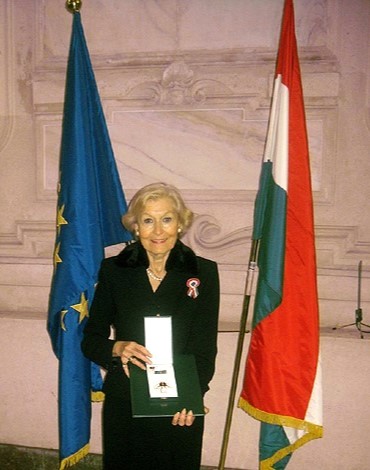
I’m incredibly proud of our small, but very active, talented, creative and productive Hungarian community with several unique organizations, whose hard and dedicated work allows us to retain our Hungarian roots and heritage and transmit them to the newest generation. We meet virtually once a year to coordinate our calendars among the following groups. We have the Hungarian Catholic Mission and the Hungarian Reformed Church of San Francisco and Vicinity, the Hungarian Heritage Foundation, the Örly Museum of Hungarian Culture and the Eszterlánc and Mazsola Folk Dance Groups. We are happy to have an additional new resource to celebrate, the Hungarian Cultural Center, operated by the Reformed Church which will open this October 19, 2024. We have two schools: the Sándor Kányádi Hungarian School operating together with the scouts troops in the Bay Area, and the Walnut Creek Hungarian School. Hungarian language is also taught at the University of California at Berkeley and Stanford University. We have the Kodály Foundation for Music Education and the Kodály Center, founded in 1969 at Holy Names College and housed by the University of Redlands since 2023. The First California Hussar Regiment, founded by Colonel Ferenc (Frank) Bakonyi in 2001 is quite unique for our community; it doesn’t exist in other states. We support two sister cities of Tokaj–Sonoma and Siófok–Walnut Creek. Finally, as mentioned, there is the HACC and the Silicon Valley Hungarian Innovators. They’ll introduce themselves at the upcoming two-part online conference organized by the PTE Diaspora Project Network, Hungary, to be held on September 27 and October 25.
Read more Diaspora interviews:

